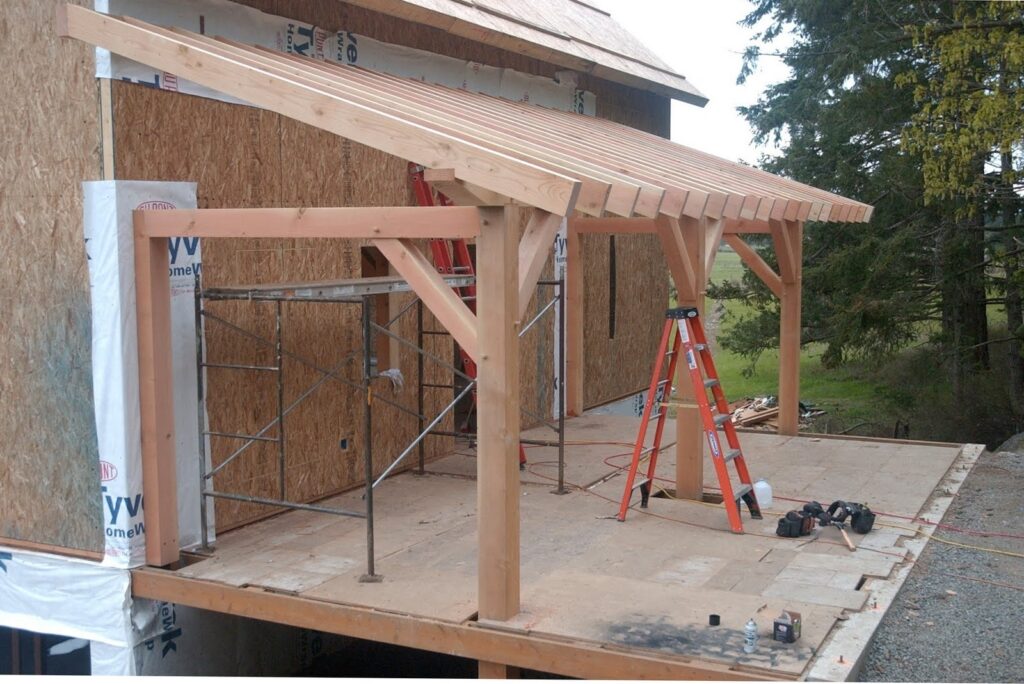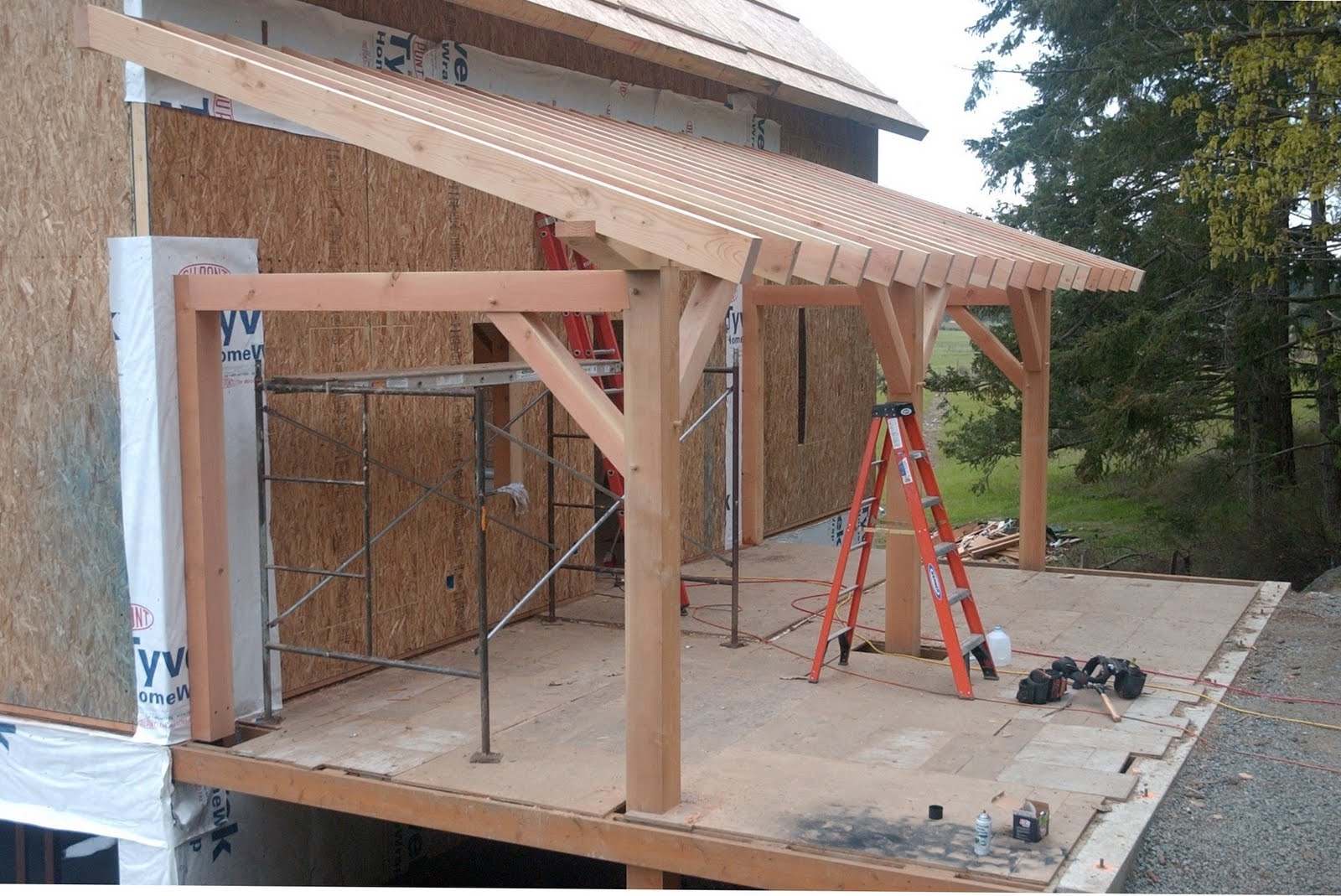
Front Porch Roof Construction: A Comprehensive Guide
The front porch is more than just an entryway; it’s a welcoming space, a place to relax, and a significant contributor to your home’s curb appeal. A well-constructed front porch roof provides protection from the elements, enhances the architectural style of your house, and adds value to your property. This comprehensive guide will walk you through the essential aspects of front porch roof construction, from planning and design to material selection and the actual building process.
Planning Your Front Porch Roof
Before you even think about picking up a hammer, careful planning is crucial. This stage involves considering various factors that will influence the design and construction of your front porch roof.
Assessing Your Needs and Preferences
Start by defining your needs and preferences. What do you want to achieve with your new front porch roof? Are you primarily seeking shelter from rain and sun, or are you aiming to create a more elaborate outdoor living space? Consider the size of the porch, the desired aesthetic, and how the roof will integrate with the existing architecture of your home. Think about the long-term maintenance and potential future additions. For example, will you want to add screens or enclose the porch later?
Understanding Building Codes and Permits
Building codes and permits are non-negotiable. Contact your local building department to understand the specific requirements for front porch roof construction in your area. These codes ensure safety and structural integrity. Failing to obtain the necessary permits can lead to costly fines and delays. Be prepared to submit detailed plans and specifications for your project. The building department can also provide guidance on zoning regulations and any potential restrictions.
Choosing the Right Design and Style
The design of your front porch roof should complement the style of your house. Common roof styles include gable, shed, hip, and flat roofs. Gable roofs are characterized by their triangular shape and are a popular choice for many homes. Shed roofs have a single slope and are often used for smaller porches. Hip roofs have slopes on all four sides and provide excellent stability. Flat roofs are less common but can be a modern option. Consider the pitch of the roof, which affects water runoff and snow load. The style should also consider the existing roofline of your house to create a cohesive appearance. [See also: Designing the Perfect Porch]
Selecting Materials for Your Front Porch Roof
The choice of materials significantly impacts the durability, appearance, and cost of your front porch roof. Consider the following options:
Framing Materials
The framing provides the structural support for your roof. Common framing materials include:
- Wood: Wood is a traditional and versatile choice. Pressure-treated lumber is essential for resisting rot and insect damage. Consider the type of wood, such as pine, cedar, or redwood, based on your budget and desired aesthetic.
- Steel: Steel framing offers superior strength and durability. It’s resistant to fire, pests, and rot. However, it can be more expensive than wood and requires specialized tools and skills for installation.
- Aluminum: Aluminum is lightweight and corrosion-resistant, making it a good option for coastal areas. It’s also relatively easy to work with.
Roofing Materials
The roofing material provides the weather-resistant barrier for your front porch roof. Options include:
- Asphalt Shingles: Asphalt shingles are the most common and affordable roofing material. They come in a variety of colors and styles. While they are cost-effective, they may not be as durable as other options.
- Metal Roofing: Metal roofing is durable, long-lasting, and energy-efficient. It can withstand harsh weather conditions and comes in various styles, including standing seam and corrugated metal.
- Tile Roofing: Tile roofing offers a classic and elegant look. It’s fire-resistant and can last for many years. However, it’s also one of the more expensive options.
- Wood Shingles and Shakes: Wood shingles and shakes provide a natural and rustic appearance. They require regular maintenance to prevent rot and insect damage.
- Composite Roofing: Composite roofing is made from recycled materials and offers a sustainable and durable option. It mimics the look of natural materials like slate and wood.
Support Columns and Posts
The support columns and posts provide vertical support for the front porch roof. Consider the following materials:
- Wood: Wood columns and posts are a classic choice. They can be painted or stained to match the style of your home.
- Vinyl: Vinyl columns and posts are low-maintenance and resistant to rot and insect damage. They come in a variety of styles and colors.
- Fiberglass: Fiberglass columns and posts are strong, durable, and lightweight. They can be painted or stained to match the style of your home.
- Brick or Stone: Brick or stone columns and posts provide a solid and elegant look. They require more extensive construction and are typically more expensive.
The Front Porch Roof Construction Process
Once you have finalized your plans and selected your materials, you can begin the front porch roof construction process. This involves several key steps:
Preparing the Site
Start by clearing the area where the porch roof will be constructed. Remove any obstacles, such as plants, furniture, or debris. Ensure that the foundation is level and stable. If necessary, pour a concrete slab or build a solid foundation for the support columns. Protect any existing structures with tarps or plastic sheeting to prevent damage during construction. Proper site preparation is crucial for a successful project.
Building the Framing
The framing is the skeleton of your front porch roof. Begin by installing the support posts or columns. Ensure they are plumb and securely anchored to the foundation. Next, construct the beams that will span between the posts. Attach the rafters to the beams, ensuring they are properly spaced and aligned. Use hurricane ties or other connectors to reinforce the framing and provide added stability. Double-check all measurements and connections before proceeding to the next step. Accurate framing is essential for a structurally sound roof. [See also: Framing a Porch Roof]
Installing the Roofing
The roofing material provides the weather-resistant barrier for your front porch roof. Start by installing a layer of underlayment, such as roofing felt or synthetic underlayment, to protect the framing from moisture. Then, install the roofing material according to the manufacturer’s instructions. Overlap the shingles or tiles properly to prevent water leaks. Secure the roofing material with nails or screws. Pay close attention to the flashing around chimneys, vents, and other protrusions to prevent water damage. Proper roofing installation is critical for a long-lasting and leak-free roof.
Adding Finishing Touches
Once the roofing is installed, you can add the finishing touches to your front porch roof. Install gutters and downspouts to direct water away from your home’s foundation. Add trim and fascia boards to conceal the edges of the roof and provide a finished look. Paint or stain the wood to match the style of your home. Consider adding decorative elements, such as railings, balusters, or lighting fixtures, to enhance the aesthetic appeal of your porch. The finishing touches can make a big difference in the overall look and feel of your porch.
Maintaining Your Front Porch Roof
Regular maintenance is essential for prolonging the life of your front porch roof. Inspect the roof regularly for signs of damage, such as missing shingles, cracks, or leaks. Clean the gutters and downspouts to prevent clogs. Trim any overhanging tree branches that could damage the roof. Repair any minor damage promptly to prevent it from escalating into more significant problems. Consider applying a sealant or preservative to the wood to protect it from the elements. Proper maintenance will help keep your porch roof in good condition for years to come.
When to Hire a Professional
While some homeowners may be comfortable tackling front porch roof construction as a DIY project, others may prefer to hire a professional contractor. Consider hiring a professional if you lack the necessary skills, tools, or experience. A professional contractor can ensure that the project is completed safely, efficiently, and to code. They can also provide valuable advice and guidance on design and material selection. Get multiple quotes from different contractors and check their references before making a decision. A reputable contractor will have the necessary licenses and insurance to protect you from liability. Investing in professional installation can save you time, money, and headaches in the long run.
In conclusion, constructing a front porch roof is a significant undertaking that requires careful planning, material selection, and execution. By following this comprehensive guide, you can create a beautiful and functional space that enhances the value and curb appeal of your home. Whether you choose to DIY or hire a professional, remember to prioritize safety, quality, and attention to detail. The result will be a welcoming and protected entryway that you can enjoy for years to come. The front porch roof is an investment in your home and your lifestyle. Careful consideration of design, materials, and construction techniques will ensure a successful project. Don’t underestimate the importance of proper planning and adherence to building codes. A well-constructed front porch roof not only provides shelter but also adds character and value to your property. Remember to regularly inspect and maintain your roof to prevent costly repairs down the line. Building a front porch roof can be a rewarding experience, transforming your home’s exterior and creating a welcoming space for family and friends. The key is to approach the project with careful planning, attention to detail, and a commitment to quality craftsmanship. A new front porch roof can dramatically improve your home’s curb appeal. When considering front porch roof construction, remember to factor in the cost of materials, labor, and permits. The right front porch roof can make all the difference. Always ensure proper ventilation when constructing a front porch roof to prevent moisture buildup. A properly constructed front porch roof will protect your home from the elements for years to come. Consider the long-term maintenance requirements when choosing materials for your front porch roof. Don’t forget to factor in the aesthetics when designing your front porch roof to ensure it complements your home’s style.

